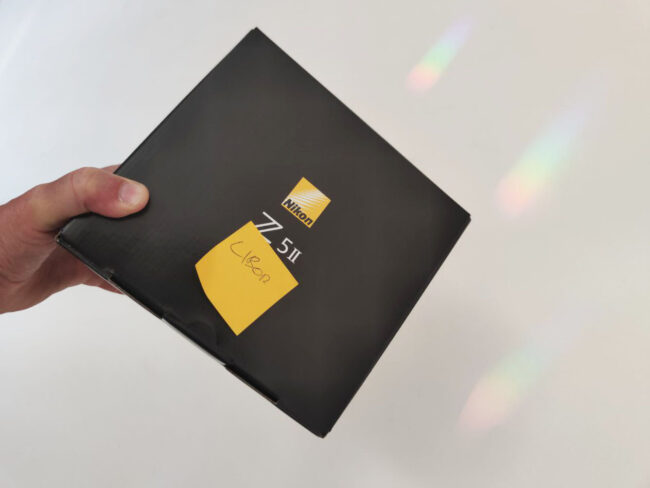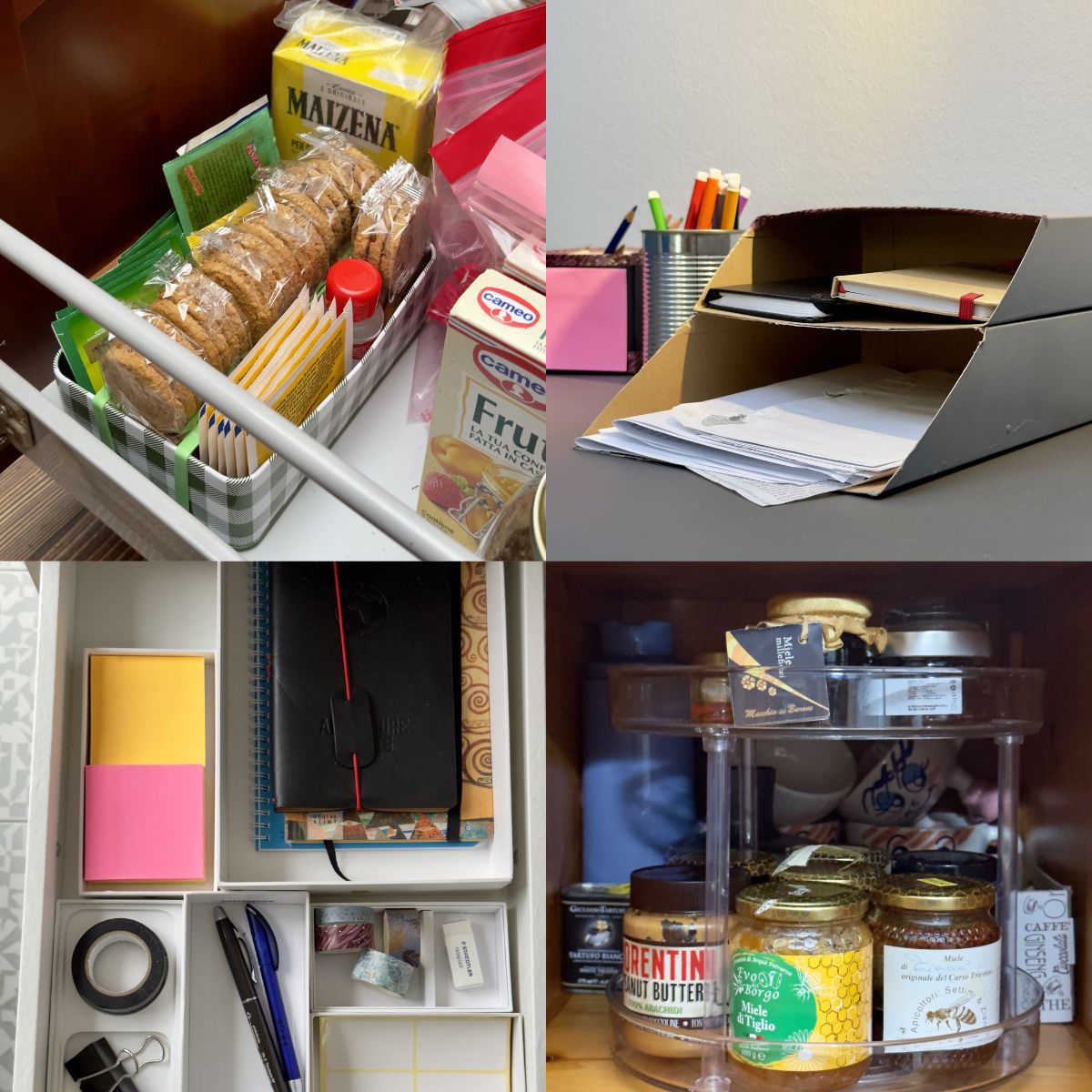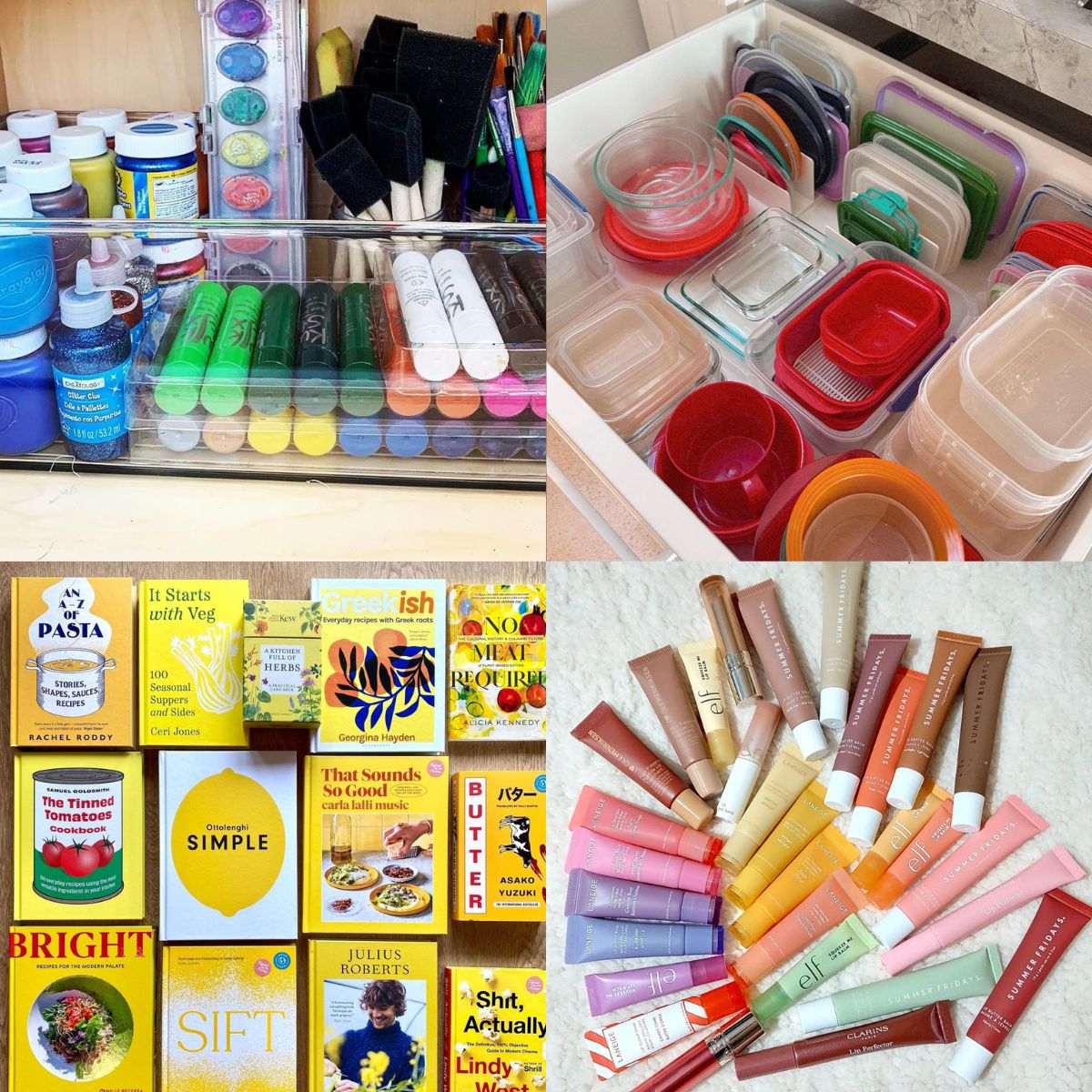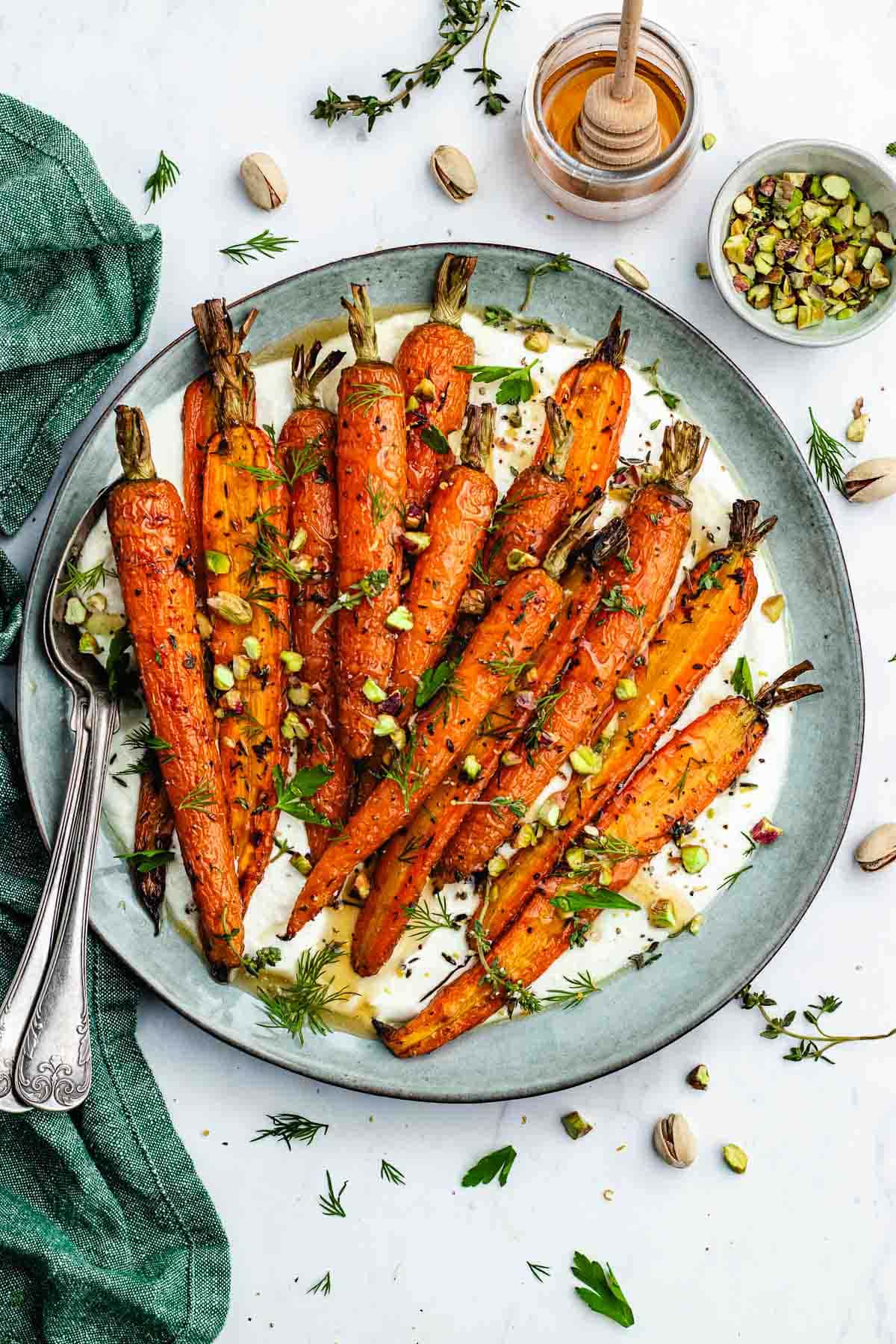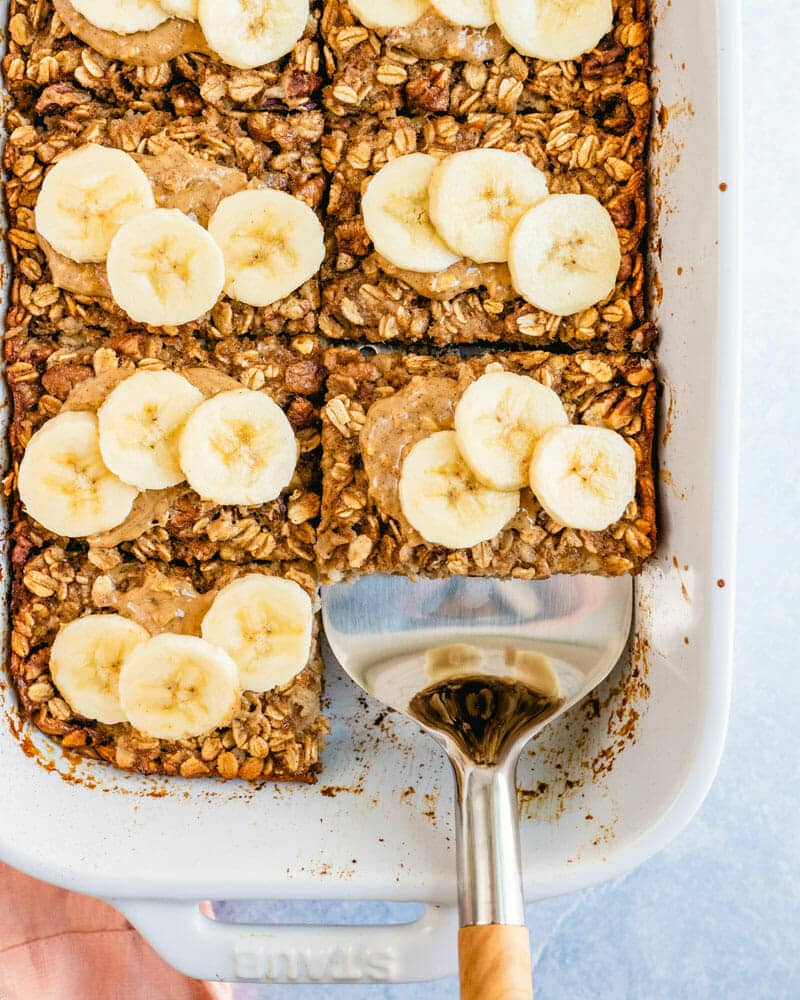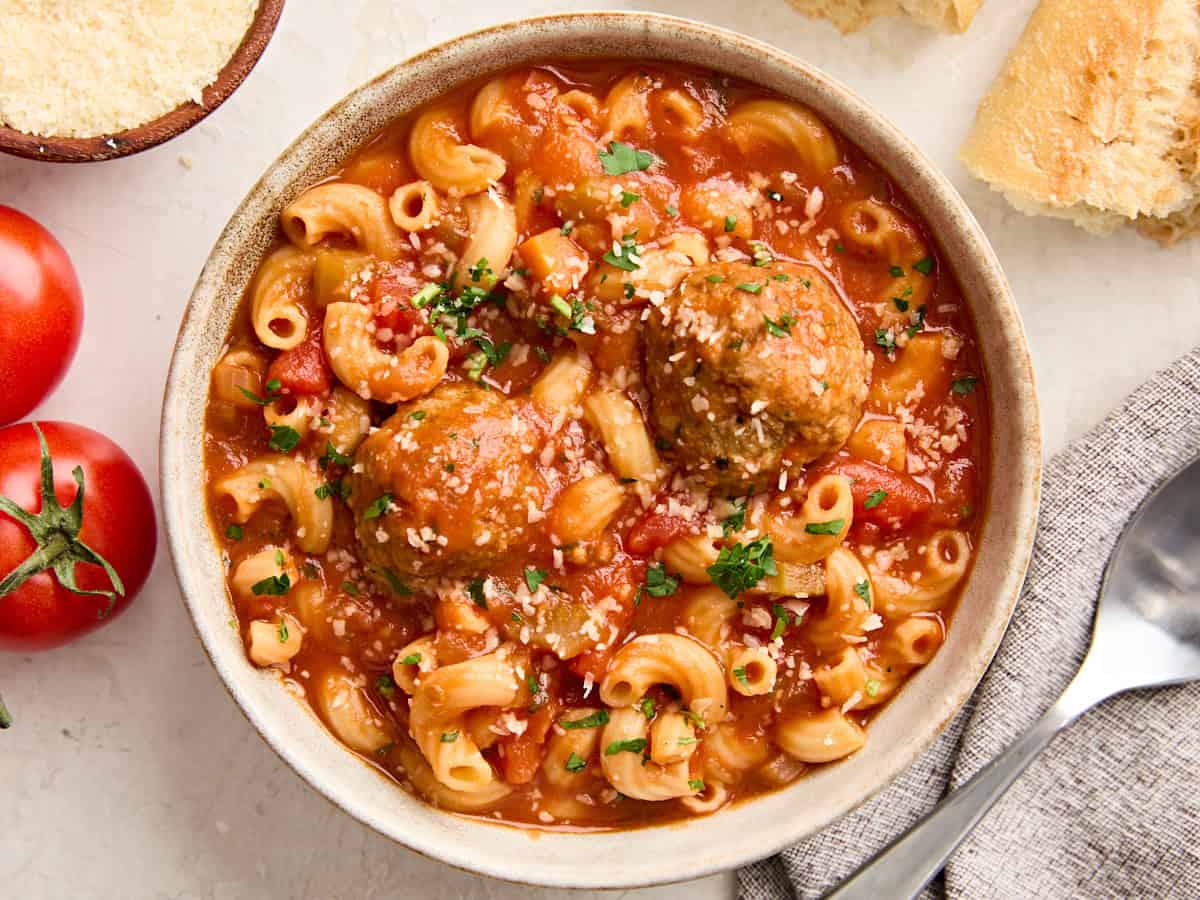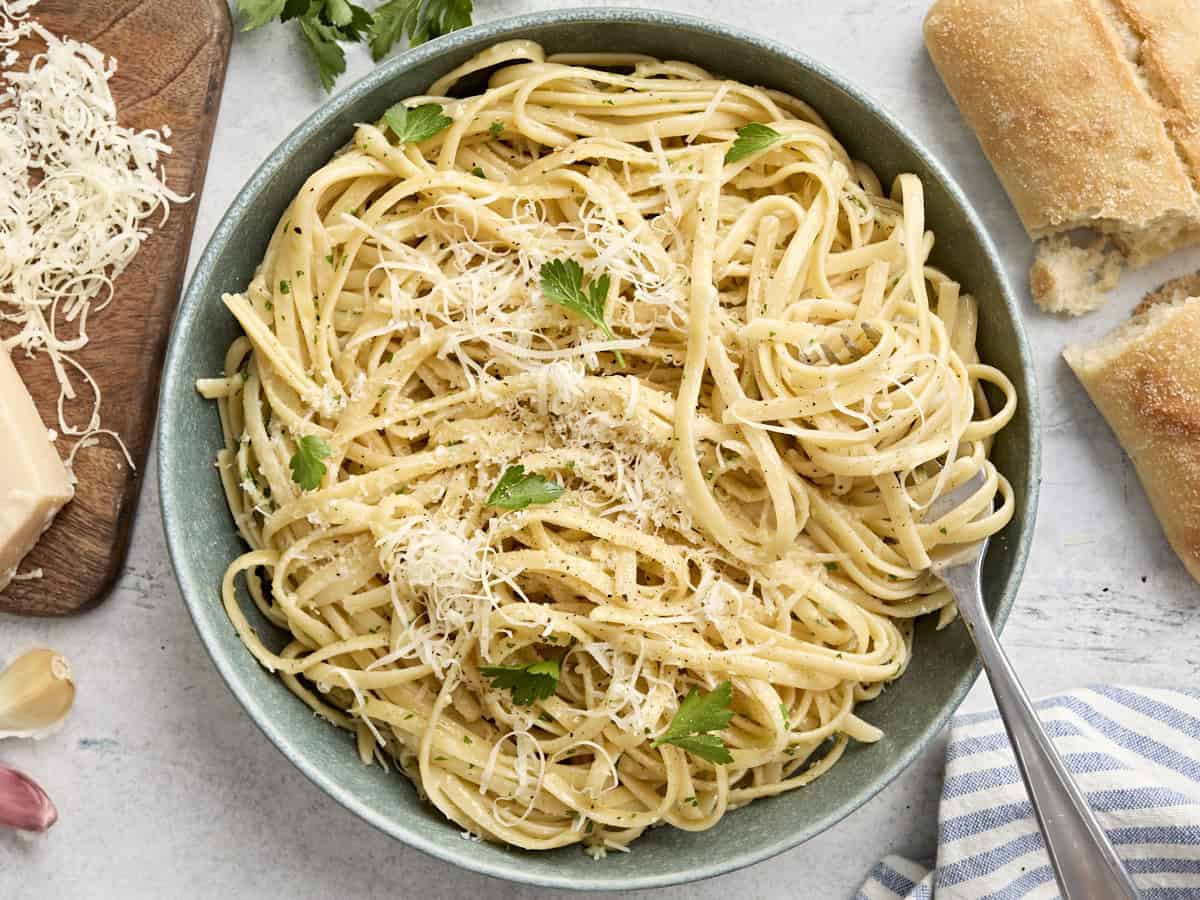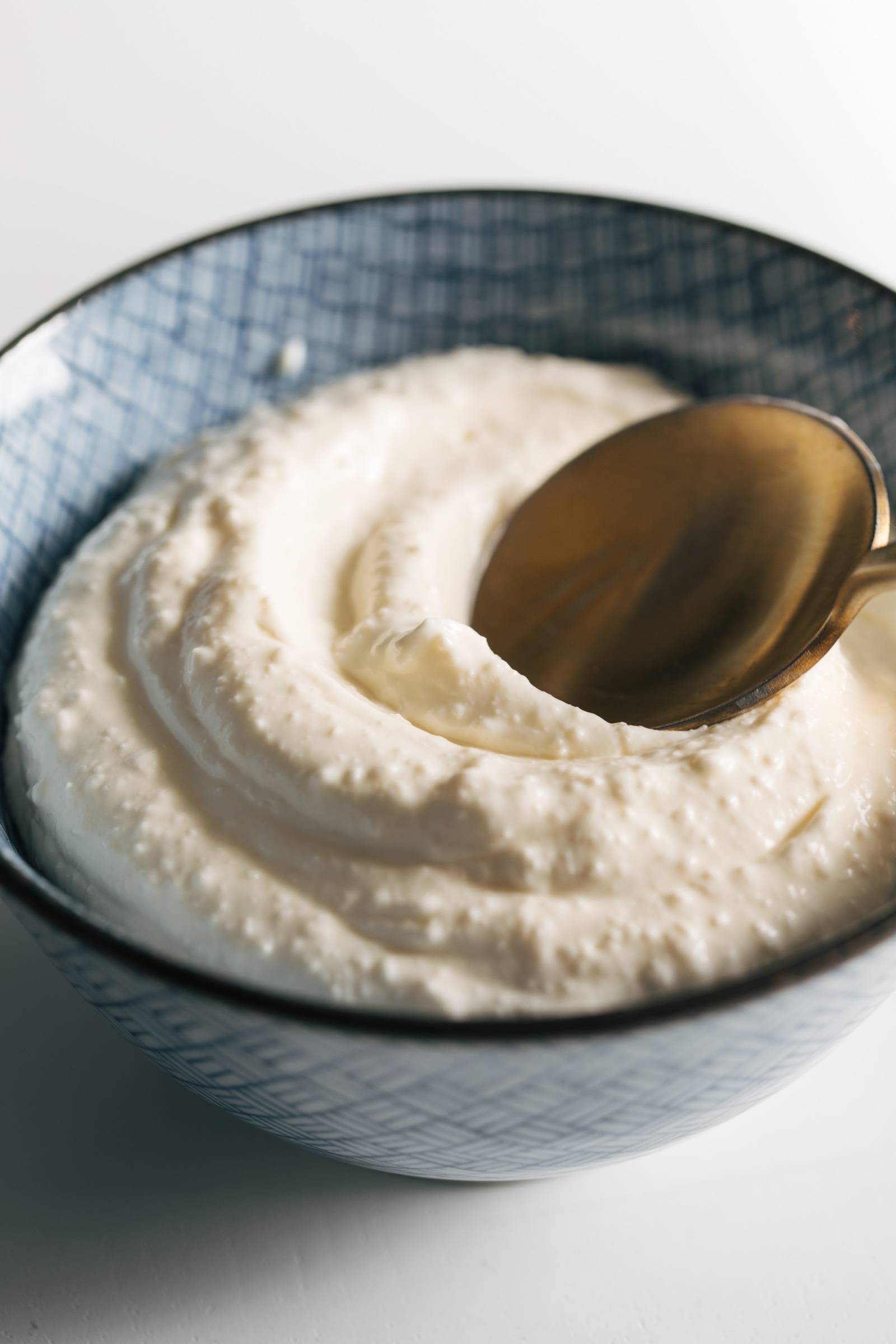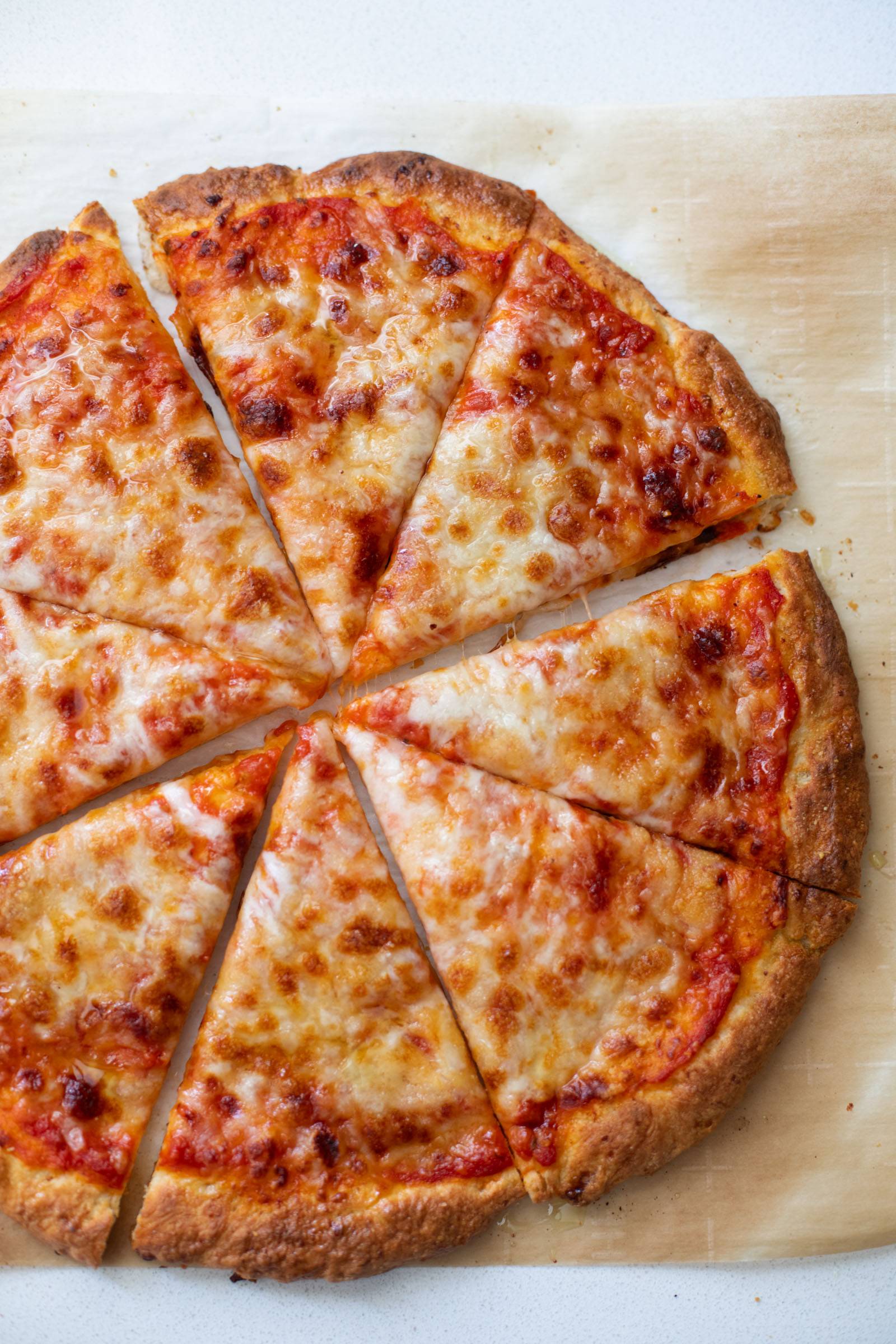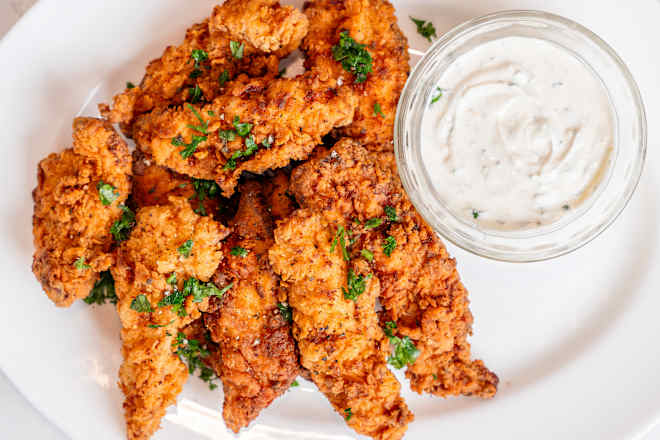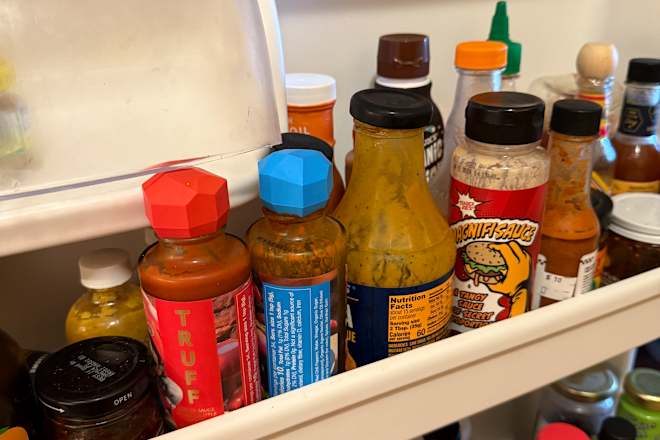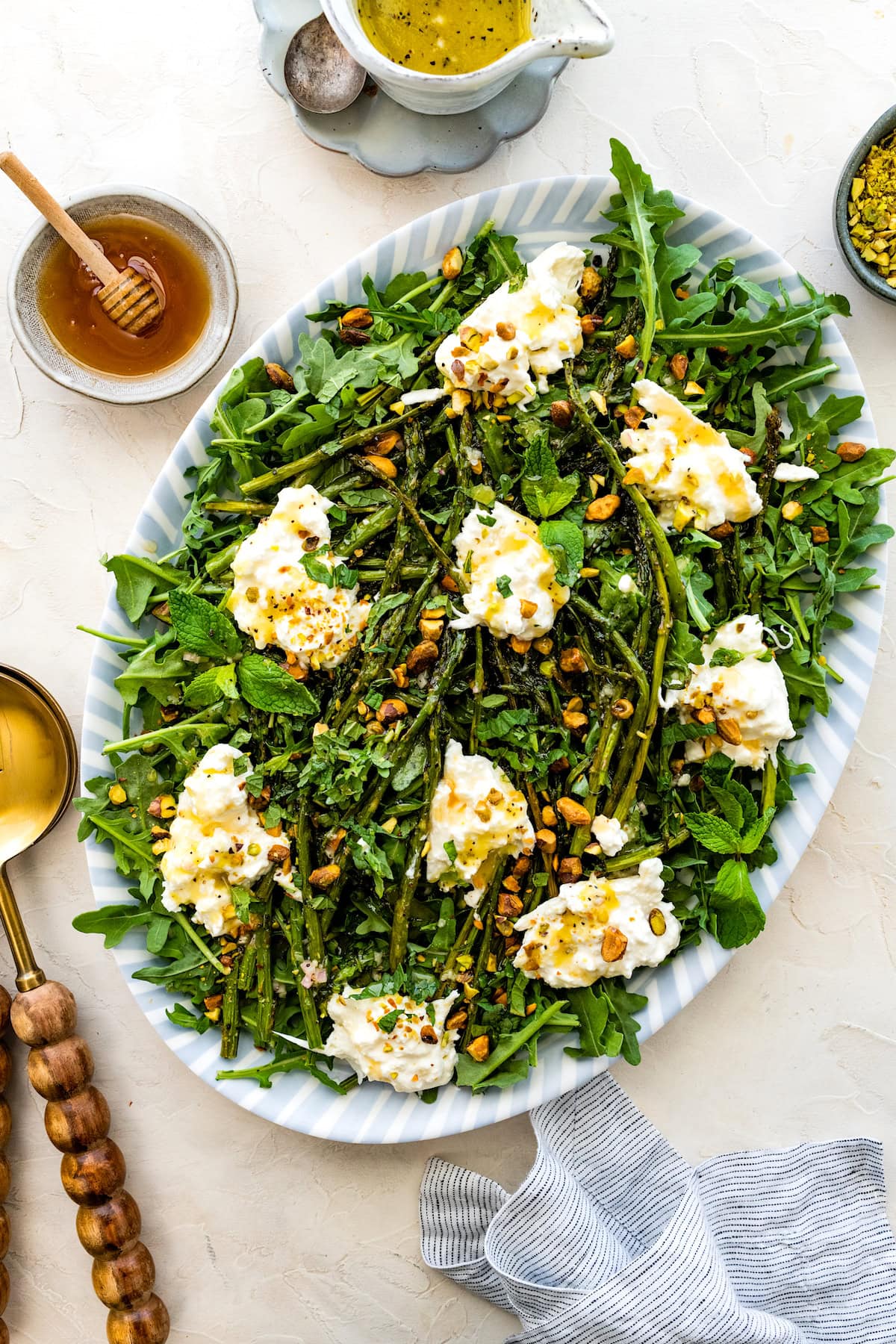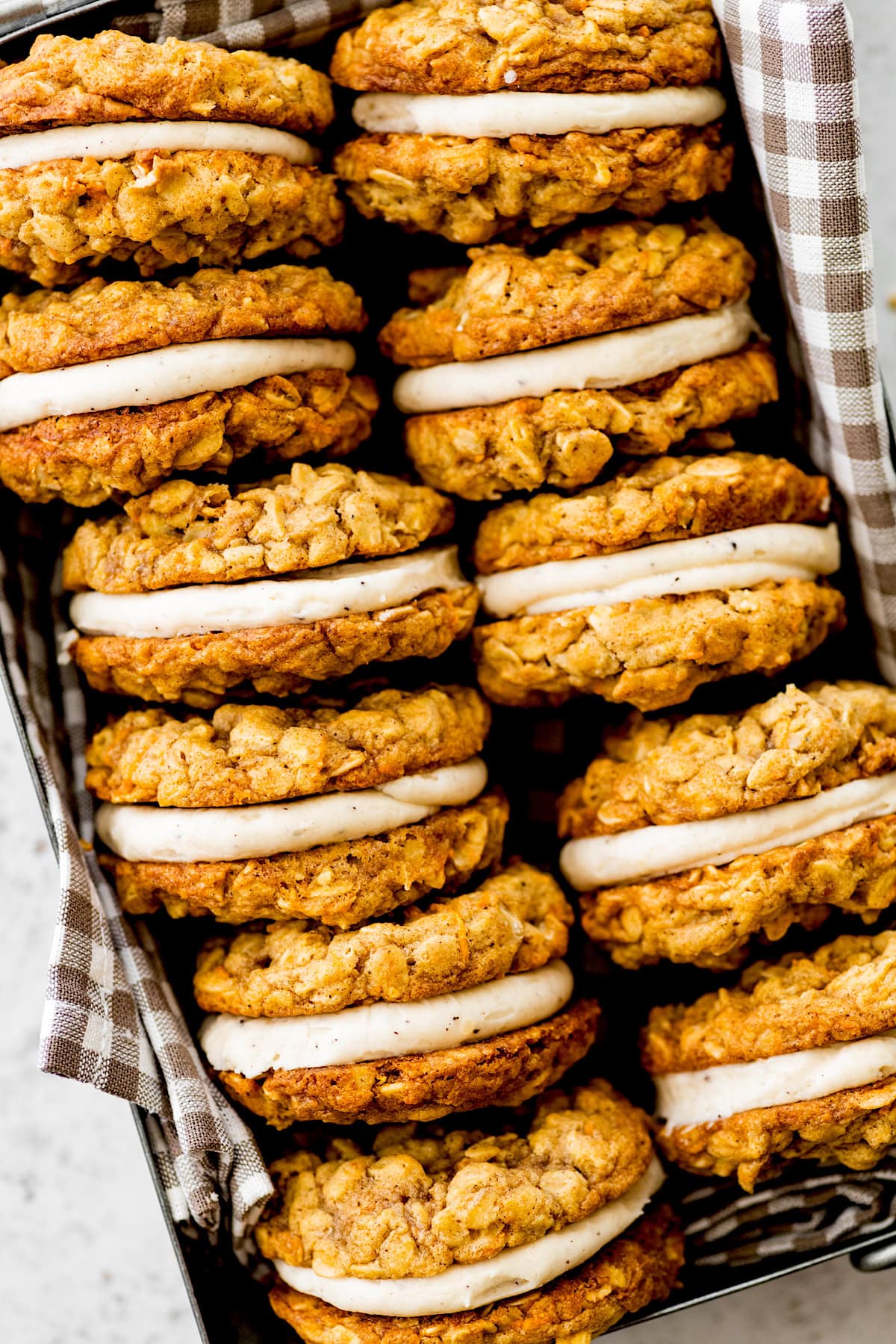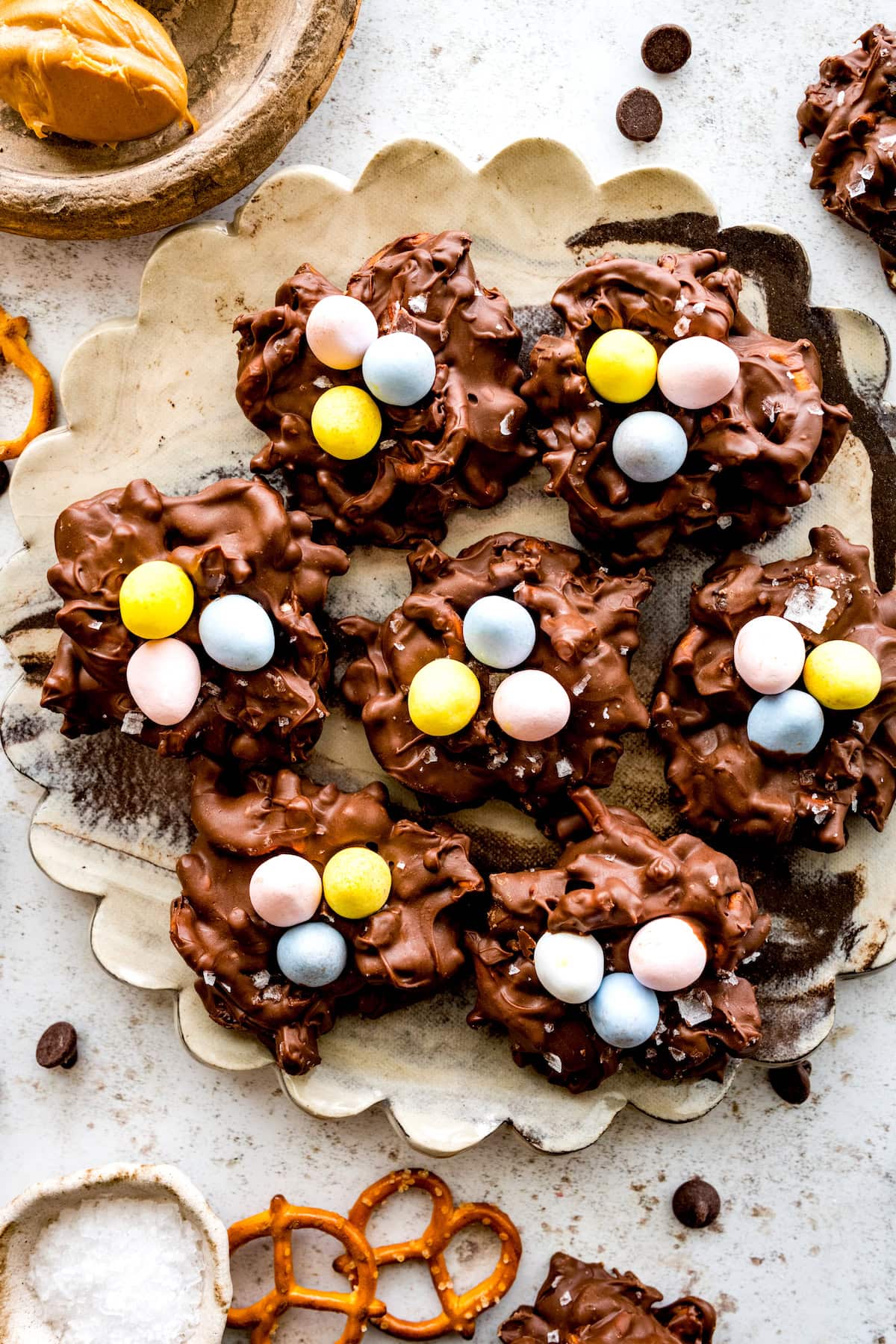These Crispy Pork Fritters Are So Famous, My Family's Restaurant Makes 200k of Them a Year
These crunchy, little sauerkraut balls are a beloved appetizer in Akron, Ohio. Savory pork loin, salty ham, and zingy sauerkraut are blended together, shaped into spheres and deep fried until creamy inside and crunchy outside.


Growing up in Ohio, I figured sauerkraut balls came over from Germany, or maybe Eastern Europe. Truth is, they’re probably from Cleveland.
I’ve heard a lot about these crunchy little pork-and-kraut fritters over the years: They’re the most popular appetizer at The Golden Lamb Inn, a hotel and restaurant in Lebanon, Ohio, that my family has owned since 1926. The kitchen rolled about 200,000 of them in 2024.
The Golden Lamb happens to be the oldest continuously operating restaurant in Ohio, but our sauerkraut ball recipe only dates to the 1960s, when an accountant named Edith, visiting from Cleveland, shared a version with longtime chef Norm Sims. That’s all I knew about its history for years. After doing some research, I’d bet a few orders that Edith got her recipe from the source, or somewhere close to it: a white-tablecloth restaurant in her hometown called Gruber’s.
Looking through decades of newspaper articles, I didn’t find any mention of sauerkraut balls as we know them (as opposed to meatballs cooked with sauerkraut, which have been around for a long time) until the late 1940s. That’s when diners and food writers began taking note of the signature appetizer at Gruber’s—created as a tasty and economical way to use up meat scraps, per various accounts.
In 1949, the nationally syndicated columnist Erich Brandeis wrote about trying “a delicious concoction such as neither my wife nor I had ever seen or tasted before” at a party. He went on: “The hostess gave my wife the recipe—you take some sauerkraut and put it through the grinder together with boiled ham. You mix this with some thick white sauce, form it into little balls, and roll them in bread crumbs. Then you deep-fry them until they turn nice and brown and serve, first sticking a toothpick in each ball." I don’t know where Brandeis, who lived in Connecticut, had his first sauerkraut ball, but that feels a lot like the Gruber’s recipe that ran in papers nationwide in the years after World War II. So does the recipe we use at the Golden Lamb.
In the decades since, the city of Akron, about forty-five minutes from Cleveland, has formally adopted the sauerkraut ball. Readers at the Akron Beacon-Journal voted it the city’s official food in 1996. If you search “sauerkraut balls” on Newspapers.com, you’ll see that that paper has run about twice as many articles about the heartland croquettes—1,278, at the time of publication—as any other in the country. Judy Orr James’s 2022 cookbook “Akron Family Recipes” concludes with an entire chapter on sauerkraut balls, subtitled “It’s An Akron Thing.”
But even James acknowledges that Cleveland did it first, noting that the Beacon-Journal didn’t mention sauerkraut balls for the first time until November 1952, after Gruber’s had already impressed the famous food writers Clementine Paddleford and Duncan Hines with theirs.
And while the sauerkraut ball has evolved over the years, including at the family restaurant, which now has its own secret recipe, the Gruber’s version was a national phenomenon for a reason. I went through dozens of reference recipes when researching this dish, and though I experimented with more recent additions and substitutions including cream cheese (very common), breakfast sausage (common), and pork shoulder (less common), none improved on the original formula. So, I cleaned it up for a modern audience, making only relatively minor changes to improve the texture and flavor. The foundational recipe is all about balance—between pork chops and ham, hearty meats and zingy sauerkraut, a tender center and a crisp, crumb-coated crust. This recipe maintains that.
There are similar dishes in Europe, including Dutch bitterballen, rich with beef and gravy, and Spain’s well-known croquetas de jamón. Sauerkraut balls follow a familiar formula—sautéed meats and aromatics bound with a roux, shaped, breaded, and fried. And the combination of pork and sauerkraut is common in European cookery, of course, especially in Germany and Eastern Europe, where many northern Ohio families trace their roots. In the melting pot that is the Midwest, those imported ideas came together to form a perfect little appetizer, bar snack, and party bite. Drawing on European tradition but almost certainly native to the Buckeye State, these sauerkraut balls balance the flavors and techniques of the Old World with the playfulness and ingenuity of the New.
In a small bowl, whisk to combine 1/2 cup flour, salt, pepper, and mustard. Set aside.
In a large Dutch oven or large skillet, melt butter over medium heat. Add pork chops and cook, turning occasionally, until browned on at least two sides, 5 to 7 minutes. Add onion, and cook, lowering the temperature if necessary to prevent burning and stirring occasionally, until softened and translucent, about 5 minutes. Add sauerkraut and ham and stir to combine.
Sprinkle seasoned flour mixture over sauerkraut mixture and cook, stirring continuously, until no flour is visible, about 1 minute. Slowly add milk in a steady stream while stirring continuously and cook until mixture thickens and clumps together, 1 to 2 minutes. Remove from heat.
Let mixture sit at room temperature until cool enough to handle, about 10 minutes. Using a meat grinder or pulsing in a food processor, pulse (about 25 pulses for a food processor) into a cohesive mixture of small, uniform pieces. It should resemble ham or tuna salad in texture. Spread mixture evenly across a plate and let it cool to room temperature, about 15 minutes. Cover with plastic wrap, and refrigerate until chilled and firm, at least 2 hours.
Once chilled, use hands to roll sauerkraut mixture into 1-ounce balls (about 30 total).
Set up a breading station with 3 shallow bowls: Fill 1 bowl with remaining 1/2 cup flour, 1 with eggs, and 1 with panko breadcrumbs. Using separate hands for wet and dry ingredients, roll each ball in flour, then egg mixture, then breadcrumbs, pressing lightly to ensure an even coating at each stage.
Heat oil to 375°FF (190°C) in a large Dutch oven or heavy-bottomed pot (oil should measure 2-inches deep, add more if needed). Working in batches of about 10 balls at a time, fry sauerkraut balls until golden brown and cooked through, turning if needed for even browning, 2 to 3 minutes. Use a slotted spoon to transfer to a paper towel-lined wire rack set in a rimmed baking sheet. Lightly season the fried balls with salt. Repeat with remaining sauerkraut balls. Allow to cool for 5 to 10 minutes before serving. Serve with ramekins of cocktail sauce and mustard for dipping.
Special Equipment
Large Dutch oven or large skillet, meat grinder or food processor, large Dutch oven or heavy-bottomed pot for frying, slotted spoon or spider skimmer
Make-Ahead and Storage
The sauerkraut balls are best enjoyed immediately.












































